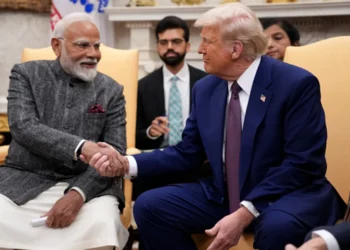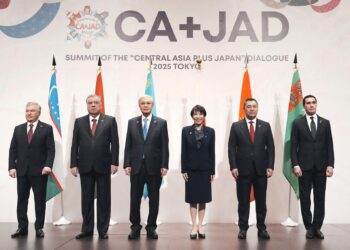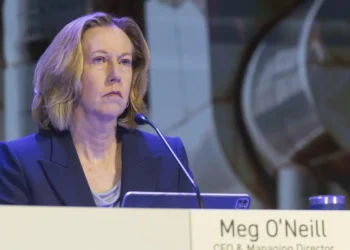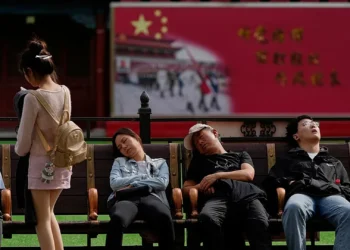SHANGHAI (Realist English). China has used its largest artificial intelligence event since the rise of homegrown champion DeepSeek to signal its global tech ambitions and offer a multilateral alternative to the U.S.-centric vision of AI development championed by President Donald Trump.
The World Artificial Intelligence Conference (WAIC), which runs through Tuesday in Shanghai, gathered more than 800 companies and drew its most international audience yet, featuring figures like Eric Schmidt, former Google CEO and prominent voice in U.S. AI policy, and AI pioneers Yoshua Bengio and Geoffrey Hinton.
In a surprise announcement, Chinese Premier Li Qiang proposed a Shanghai-based AI cooperation body and two new UN dialogue mechanisms for AI governance — a clear effort to distinguish Beijing’s stance from Washington’s. Just days earlier, the U.S. unveiled an “AI action plan” reflecting Trump’s “America First” approach, aimed at securing American leadership in the field.
“The U.S. AI agenda is built on national self-interest,” said George Chen, partner at The Asia Group. “China, by contrast, is framing itself as a promoter of openness and international cooperation.”
A vision built on open-source AI and scaled deployment
The WAIC exhibition floor reflected this narrative shift. Many Chinese firms showcased products built on domestic open-source models, including those from Alibaba and DeepSeek, marking a break from previous years when Western platforms like OpenAI’s GPT or Meta’s Llama dominated demonstrations.
Chinese officials have hailed open-source models as proof that Beijing is willing to share the benefits of its AI advancements globally. Industry insiders also credit this model-sharing for China’s rapid technical gains.
“We see innovation in DeepSeek’s architecture and adapt it to our needs,” said an executive from Alibaba Cloud, speaking anonymously. “This open exchange accelerates everyone’s progress.”
With a massive domestic market and strong state support, Chinese firms are testing AI systems at unmatched scale and speed. One clear advantage: robotics. At WAIC, humanoid machines roamed the floor, while robotic dogs leapt and flipped, drawing crowds.
“The robotics field is still grappling with hardware challenges — sensors, dexterity, core computing power,” said Jefferies analyst Edison Lee. “We’re years away from mass adoption, but the volume of investment is astonishing.”
China’s aggressive push — including price wars among domestic AI firms and government subsidies for relocating R&D — has dramatically lowered production costs. Yet it also raises fears of overcapacity in sectors with unclear commercial viability.
A growing ecosystem — and growing risks
Dozens of companies, including Shenzhen DX Intech, displayed humanoid robots for security, entertainment, and companionship applications. Others, like EYou Robotics, reported a spike in export orders from South Korea, attracted by China’s combination of high quality and low prices.
Some developers are focusing on “embodied AI”, where humanlike machines integrate chatbot personalities. “We don’t make robots, but we can embed our AI to make them companions,” said Shunshun Yin, head of AI at Soul, a Gen Z-focused chatbot platform.
But experts caution that open-source AI could also enable malicious uses. With many Chinese firms racing to commercialize, safety mechanisms are often an afterthought. WAIC organizers emphasized Beijing’s commitment to AI safety, but industry insiders remain skeptical.
During his speech, Eric Schmidt urged greater U.S.-China cooperation on AI safety to mitigate shared existential threats. “This is a race we cannot afford to run separately,” he said.
China’s growing edge, Europe’s cautious path
Despite concerns, visitors were impressed by the scale and ambition of China’s AI ecosystem. “I came to see how far China has come — and I’m honestly amazed,” said Stephan Doukhopelnikoff, a Brussels-based AI policy expert. “While Europe obsesses over regulation, China is building.”
As global competition in AI intensifies, WAIC revealed more than just cutting-edge robotics. It showcased China’s evolving strategy: part tech powerhouse, part diplomatic alternative, and a country determined to shape the future of AI — on its own terms.


















